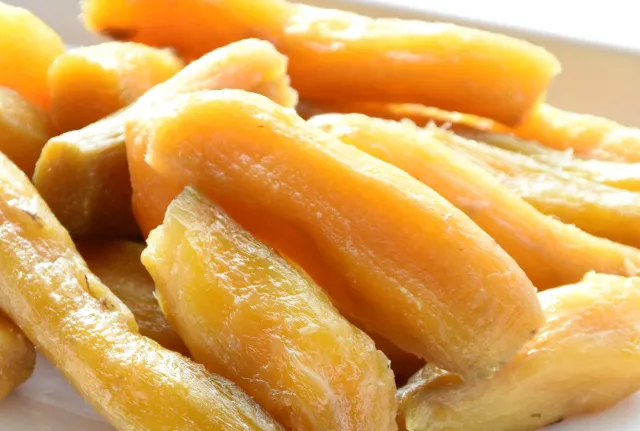Have you ever heard of hoshiimo, Japan’s dried sweet potato?
In Japan, it’s a beloved snack that almost everyone has tasted at least once.
What is Hoshiimo?
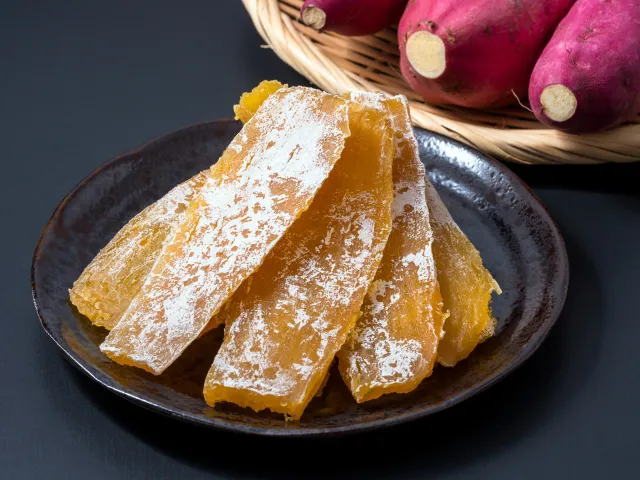
Hoshiimo is a natural food made by steaming sweet potatoes and then drying them either in slices or whole.
No sugar or additives are used—just the natural sweetness of the sweet potato itself, concentrated through the drying process.
The gentle sweetness grows with each bite, and combined with its rich nutrients, it’s enjoyed by both children and adults alike.
A Brief History
Hoshiimo is said to have started in the late Edo period (1603–1868), when sweet potatoes became widely available in Japan and people sought ways to preserve them.
Production flourished in regions such as Ibaraki Prefecture and Shizuoka Prefecture, where many farms continue to specialize in dried sweet potatoes today.
In recent years, as more people seek healthy and natural foods, hoshiimo has been rediscovered. It’s low in fat, high in dietary fiber and vitamins, and loved as a guilt-free snack.
The Nutrition and Charm of Hoshiimo
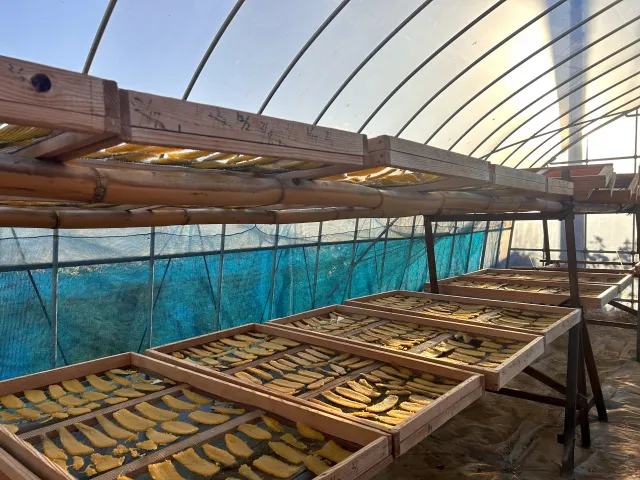
Nutritional Benefits
- Dietary Fiber: Helps regulate digestion and is effective for relieving constipation.
- Vitamin C: Unlike in many foods, the Vitamin C in sweet potatoes is less likely to break down even after heating and drying.
- Potassium: Supports the prevention of water retention and helps maintain fluid balance.
- Beta-Carotene: Acts as an antioxidant and promotes healthy skin and immunity.
Why People Love It
- All-Natural Sweetness: No additives or artificial coloring—just the natural flavor of the sweet potato.
- Low-GI Snack: Provides steady energy and keeps you feeling full for longer.
- Perfect Guilt-Free Treat: Popular as a light snack to satisfy small cravings or even as a diet-friendly option.
Current Popularity and Trends
A “Superfood”-Like Status
Among health-conscious people interested in diet and beauty, hoshiimo is loved as a “guilt-free snack.”
Believe it or not, there is even a Hoshiimo Shrine in Japan, showing just how beloved this snack has become!
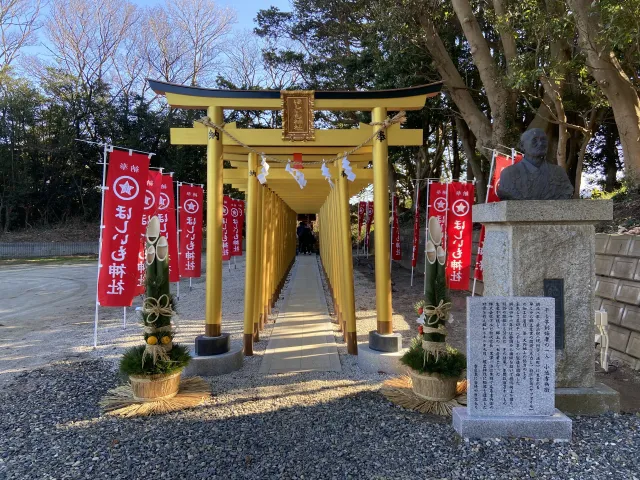
Growing Popularity Overseas
Beyond Japan, especially in parts of Asia, it is now recognized as “Japanese dried sweet potato.”
Exports have been steadily increasing as more people discover its unique taste and natural sweetness.
A Variety of Styles
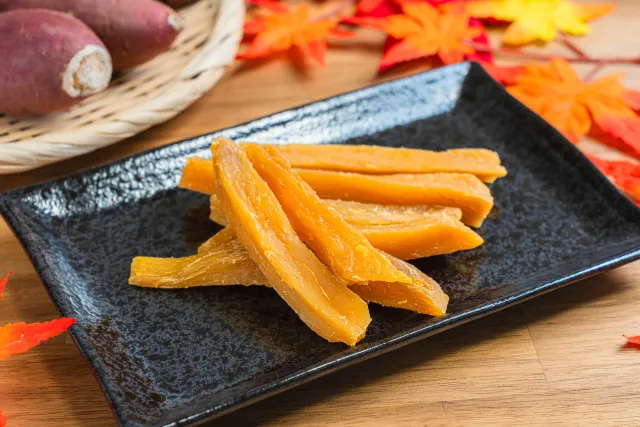
Hoshiimo comes in many forms today:
- Sliced Hoshiimo (the classic flat style)
- Whole Hoshiimo (plump, chewy pieces)
- Roasted Hoshiimo (baked before drying, for deeper flavor)
- Frozen Hoshiimo (easy to enjoy after natural thawing)
- Dessert Creations (ice cream, bread, smoothies, and more made with hoshiimo)
Main Production Areas
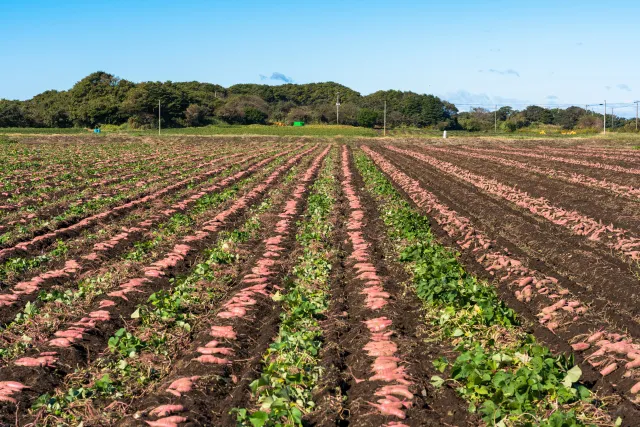
- Ibaraki Prefecture: Produces more than 80% of Japan’s hoshiimo.
Especially famous in cities like Hitachinaka, Naka, and Tokai, where the “Beni Haruka” sweet potato variety is used to make soft, sweet, and moist hoshiimo. - Shizuoka Prefecture: Sometimes called the birthplace of hoshiimo in Japan.
- Other Regions: Kagoshima, Chiba, and several others also produce their own varieties.
My Recommendation
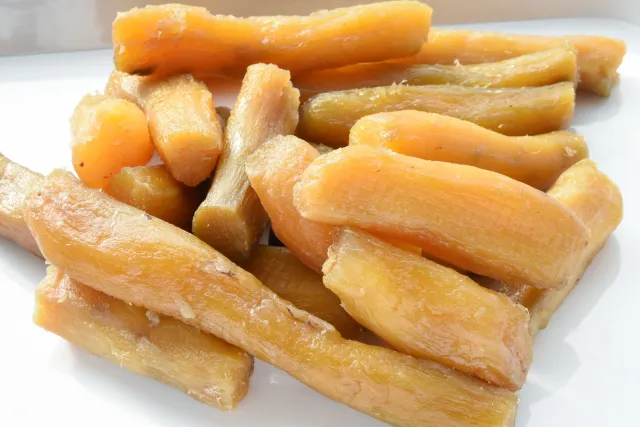
Personally, my favorite is whole hoshiimo!
It’s hard to believe that no sugar is added—the natural sweetness is incredible.
Unlike the firmer sliced type, the whole version is soft, moist, and satisfyingly thick.
If you ever get the chance, I highly recommend trying it!
Where to Buy Hoshiimo
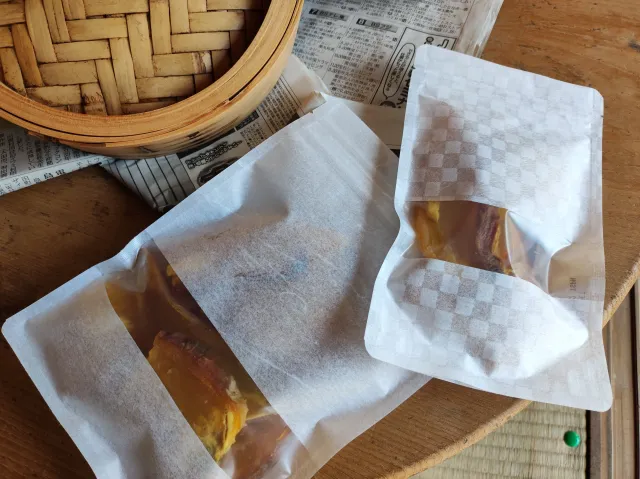
You can find hoshiimo in many places—direct farm stands, supermarkets, department stores, and of course online.
However, since sweet potato harvesting is seasonal, the availability of hoshiimo in the market also follows a set schedule. Keep this in mind when planning to buy.
Shipping and Distribution Season
1. Sweet Potato Harvest
- Harvested mainly from September to November.
- The potatoes are not used immediately; instead, they are stored and naturally sweetened through a process of aging.
2. Hoshiimo Production
- After the sweet potatoes have matured, they are steamed and dried.
- The peak production season is from December through March.
- In Ibaraki and other major producing regions, making hoshiimo is considered a traditional winter activity.
3. Distribution Season
- Hoshiimo typically appears on the market from late December to around April.
- The peak season is January to February, when the freshest batches are available.
- As temperatures rise in spring, quality preservation becomes difficult, and distribution decreases.
4. Year-Round Availability
- Thanks to modern storage and packaging, frozen hoshiimo and vacuum-sealed products are now available.
- Some supermarkets and online shops sell them throughout the year.
- However, many of these products were originally made during the winter season and then preserved for off-season sales.
How to Store Hoshiimo
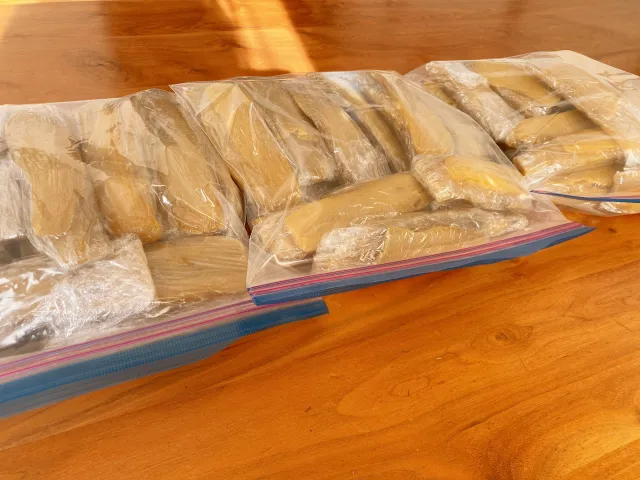
Although hoshiimo is a type of preserved food and can last for a while at room temperature, it’s best to refrigerate it if you plan to keep it for several days.
For even longer storage, freezing is recommended—it keeps the flavor and texture intact.
How to Enjoy It
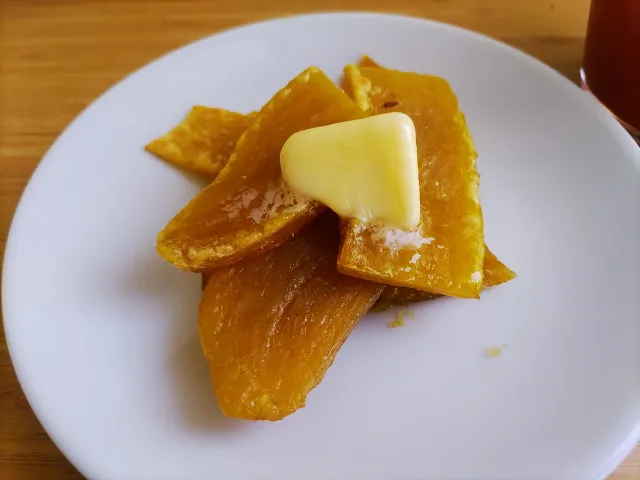
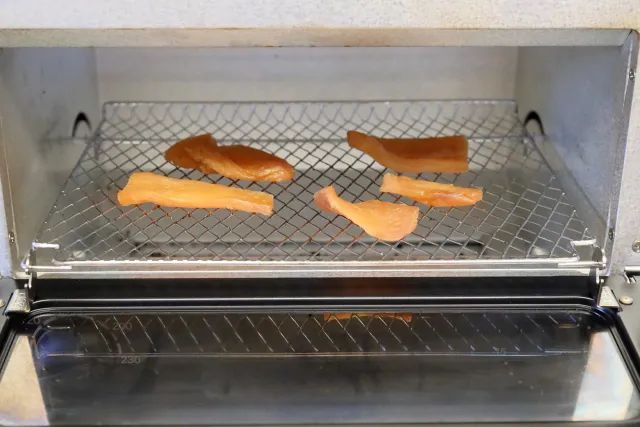
Hoshiimo tastes great even when eaten cold.
But if it has been stored in the fridge, try warming it lightly in a toaster oven or giving it a quick microwave heat.
This brings out a softer texture and a richer sweetness.
What About the White Powder?
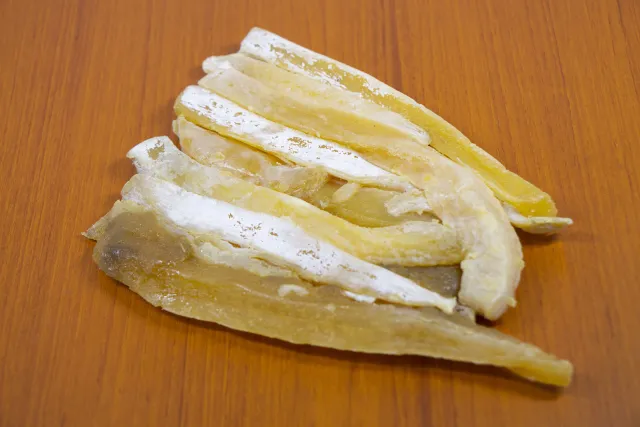
Sometimes store-bought hoshiimo has a white powdery coating on the surface.
Don’t worry—it’s not mold. This is simply the natural sugars of the sweet potato that have crystallized.
In fact, it’s often a sign of sweetness and quality!
Final Thoughts

In my wife’s hometown, her family produces hoshiimo every year.
The very first time I tasted freshly made whole hoshiimo, I was amazed by how naturally sweet and delicious it was.
It’s an experience I’ll never forget.
So if you ever come across hoshiimo in Japan, I encourage you to give it a try.
Thank you for reading!
If you enjoy my posts, your support really motivates me ☕

